The Gupta Dham in Bihar, situated in the Kaimur Hills, hold a unique blend of history, spirituality, and natural beauty. Known for their ancient Shiva temple, Gupta Dham caves attract pilgrims and tourists alike. Carved out of limestone, the caves feature stunning natural rock formations and are believed to be centuries old, with stories connecting them to sage Viswamitra. Every year, devotees come here, especially during the Hindu month of Shravan, to seek blessings. The peaceful atmosphere and cultural significance make it a must-visit for history enthusiasts and spiritual seekers.
Location
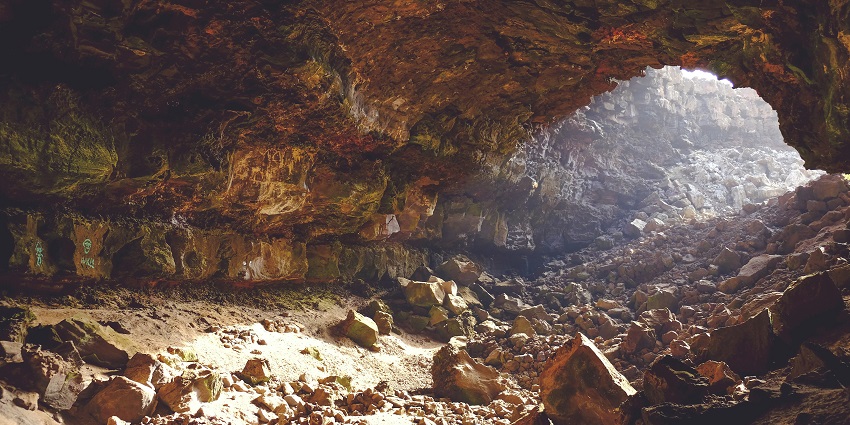
Photo: Ksenia Kudelkina / Unsplash / Image For Representation Only
The Gupta Dham Caves are situated around 60 kilometres from Bhabua, the district headquarters of Kaimur, Bihar. The city of Sasaram is approximately 90 kilometres, making it accessible By Road for visitors from nearby regions. Additionally, the caves are about 180 kilometres from the city of Varanasi.
Suggested Read: Patna City Guide
How To Reach Gupta Dham Caves
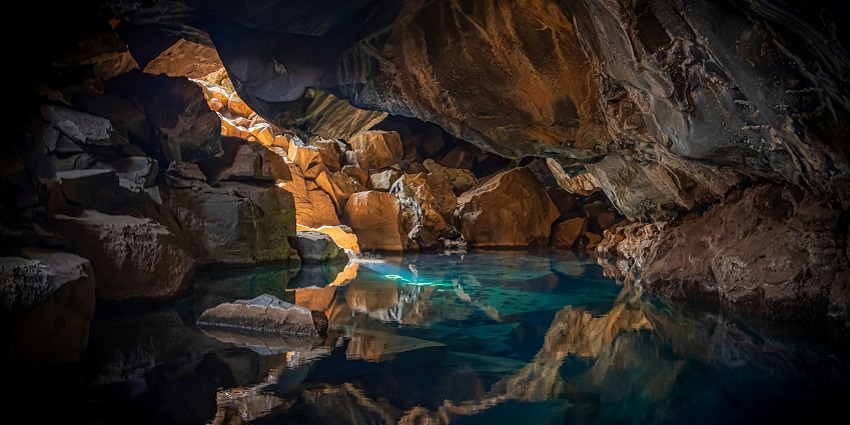
Photo: Michael Behrens / Unsplash / Image For Representation Only
By Train: The nearest major railway station is Sasaram, located about 90 kilometres away from the caves. From Sasaram, taxis or local buses provide road connectivity directly to the caves.
By Air: Lal Bahadur Shastri International Airport in Varanasi, approximately 180 kilometres from Gupta Dham. After arriving in Varanasi, visitors can hire a taxi or rent a car for the journey, which takes roughly four to five hours By Road.
By Road: For those travelling By Road, the caves are accessible via state highways from nearby cities like Bhabua (60 kilometres) and Sasaram. Road trips to Gupta Dham allow travellers to enjoy panoramic views of the surrounding Kaimur hills.
Places To Visit Near Gupta Dham Caves
Explore the scenic region surrounding Gupta Dham Caves, which offers a plethora of extraordinary locations;
1. Mundeshwari Temple
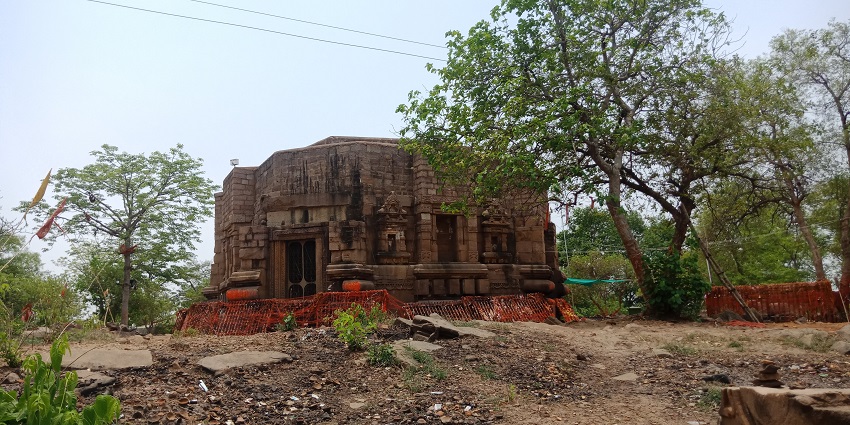
Photo: Shivam Kumar / Wikimedia Commons
The Mundeshwari Temple, situated 60 kilometres from Gupta Dham, is one of India’s ancient functional temples, with origins tracing back to 108 AD. This venerable stone structure, devoted to Lord Shiva and Goddess Shakti, features an exceptional octagonal design, which is quite uncommon in Hindu temple architecture. The temple is celebrated for its carved stone idols, depicting a variety of deities, such as Lord Ganesha, Surya, and Vishnu.
Timings: 6 AM – 8 PM
Suggested Read: Mahabodhi Temple
2. Kaimur Wildlife Sanctuary
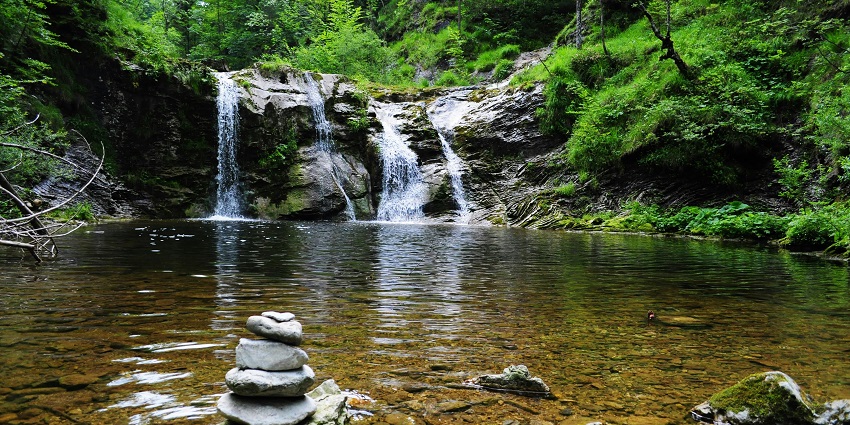
Photo: Manuela Adler / Pexels / Image For Representation Only
Kaimur Wildlife Sanctuary is around 50 kilometres from Gupta Dham and represents the largest sanctuary in Bihar, encompassing an area of 1,340 square kilometres. This sanctuary supports a diverse range of wildlife, such as leopards, sloth bears, and sambar deer, in addition to a plethora of avian species. Kaimur’s landscape varies from dense forests to cascading waterfalls and intriguing caves, which collectively create an ideal habitat for various forms of wildlife.
Timings: 6 AM – 6 PM
3. Shergarh Fort
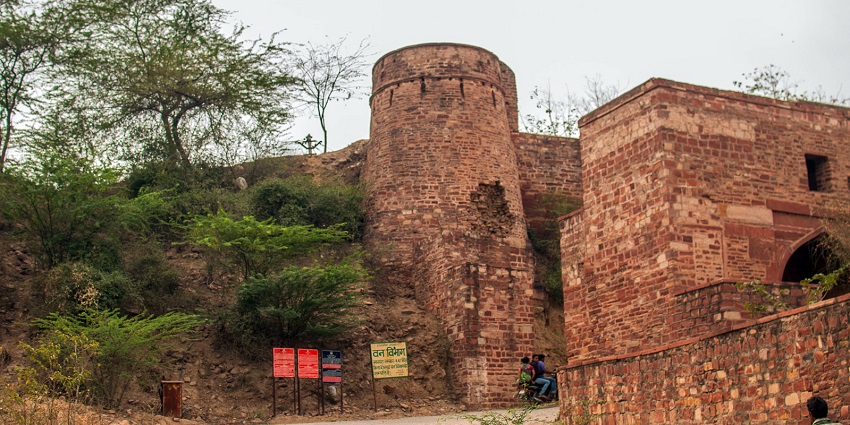
Photo: Travelling Slacker/ Wikimedia Commons
Shergarh Fort, located approximately 80 kilometres from Gupta Dham, was built during the 16th century, having been constructed during the rule of Sher Shah Suri. This historic structure is situated atop a hill, thus providing a commanding view of the surrounding landscape. The fort’s architecture, with its towering walls, gateways, and ancient water reservoirs, offers a glimpse into the military design of mediaeval India.
Timings: Sunrise to sunset
Suggested Read: Buxar Fort
4. Bhaluni Dam
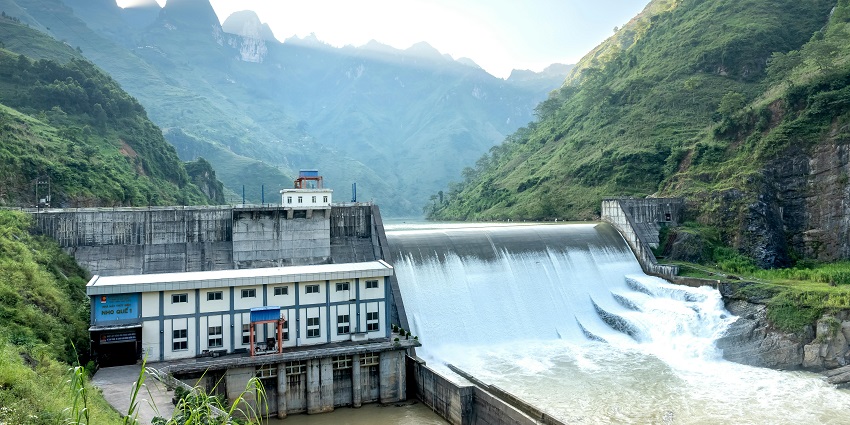
Photo: Quang Nguyen Vinh/ Pexels / Image For Representation Only
Bhaluni Dam, situated approximately 70 kilometres from Gupta Dham, is a relatively well-known yet stunning destination for both relaxation and picnicking. Surrounded by dense foliage, the dam forms a reservoir that draws numerous migratory birds during the winter season. The dam provides a stunning vista of the water body against the Kaimur Hills, thereby making it a peaceful haven for visitors.
Timings: Sunrise to sunset
5. Rohtasgarh Fort
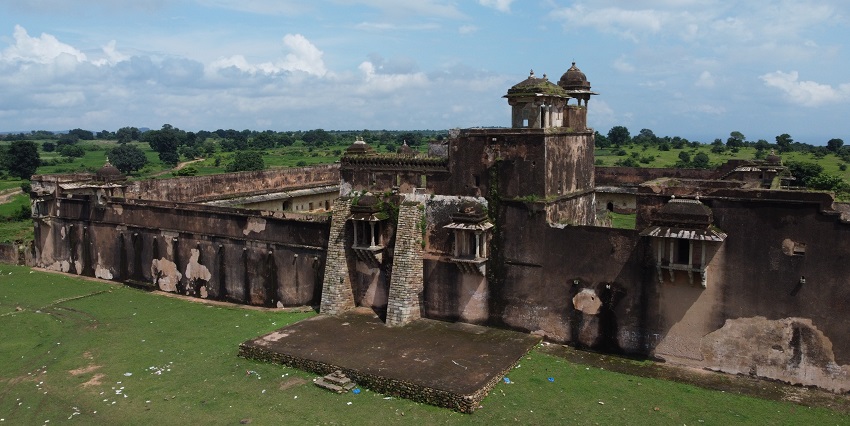
Photo: Indianvagabond / Wikimedia Commons
Rohtasgarh Fort, located approximately 100 kilometres from Gupta Dham, ranks among the largest hill forts in India. This fort, constructed by Raja Harishchandra during the 7th century encompasses a vast expanse and holds considerable architectural and historical importance. Although reaching the fort requires a challenging trek up the hill, it rewards visitors with breathtaking vistas of the surrounding landscape.
Timings: 6 AM – 5 PM
Suggested Read: Ajatshatru Fort
6. Dhua Kund Waterfalls
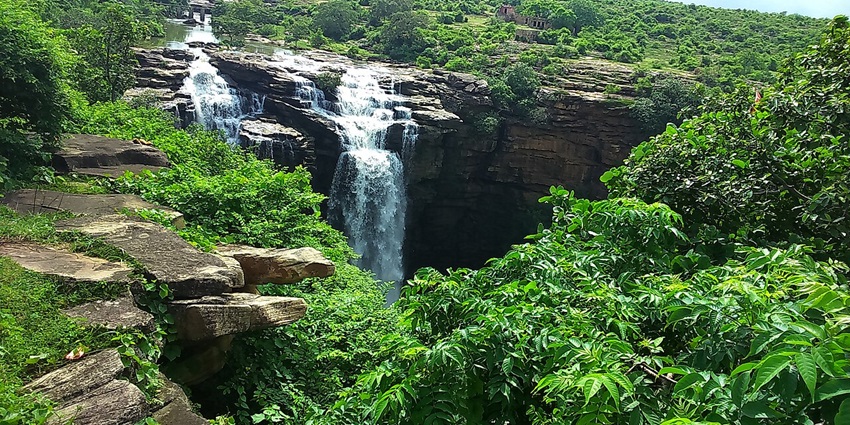
Photo: Jitendra 001 / Wikimedia Commons
Dhua Kund is a beautiful waterfall in Bihar that is known for its misty spray that looks like smoke. It gets its water from the Karmanasa River and is popular with tourists because of its natural beauty and peaceful surroundings. The falls are most beautiful when the water flow is at its strongest during the summer. People who live there also think of it as holy and hold religious events and ceremonies there.
Distance From The Caves: 15 km
7. Tomb Of Sher Shah Suri
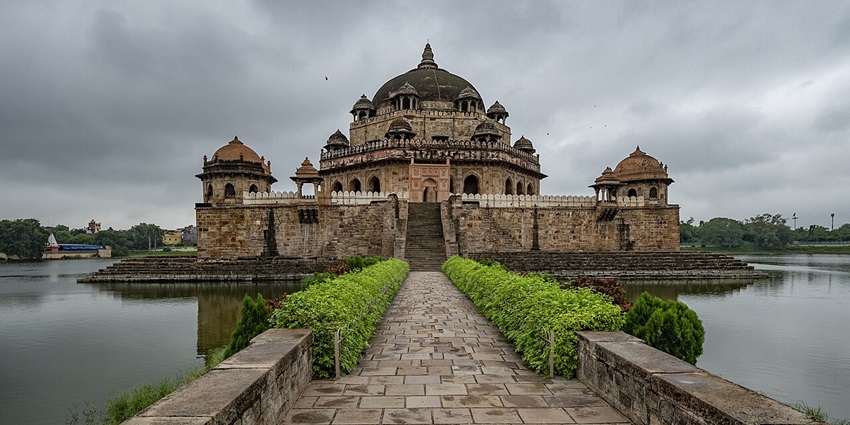
Photo: Indianvagabond / Wikimedia Commons
Built in the 1600s, the Tomb of Sher Shah Suri in Sasaram is a great example of an Indo-Islamic building. The large red limestone mausoleum is set on a platform that looks like an island and is surrounded by a peaceful water tank. It honours the great Afghan king Sher Shah Suri, who is known for building the Grand Trunk Road.
Distance From The Caves: 18 km
Suggested Read: Gaya Travel Guide
8. Tara Chandi Hill
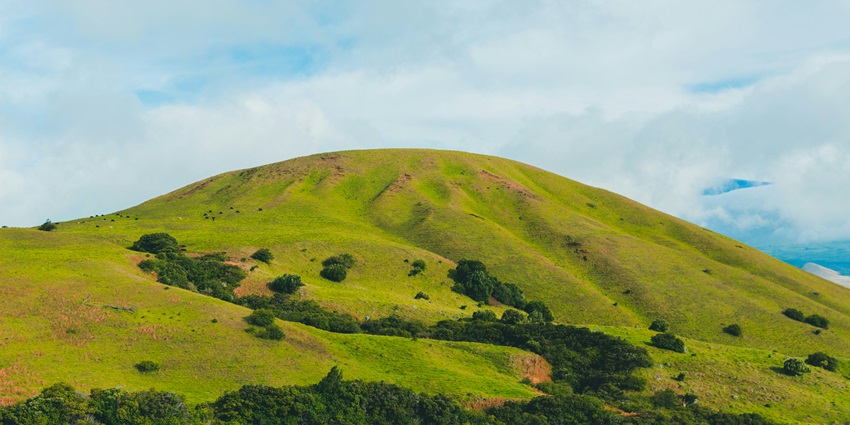
Photo: Jakob Owens / Unsplash / Image For Representation Only
Tara Chandi Hill, located near Sasaram, is a revered site associated with Goddess Tara, an incarnation of Shakti. The hill features an ancient temple visited by devotees seeking blessings, especially during Navratri. Apart from its religious significance, the site offers picturesque views and a peaceful environment. Archaeological remains found nearby suggest its historical importance, making it a place where spirituality, history, and scenic charm converge.
Distance From The Caves: 5 km
9. Durgavati Dam
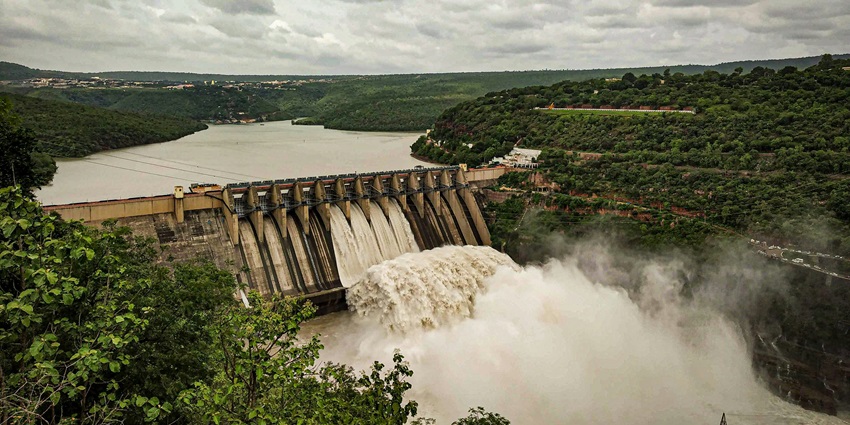
Photo: Rahul Pabolu / Unsplash / Image For Representation Only
In the Kaimur district, Durgavati Dam is a famous place for a picnic because it is surrounded by hills and lots of greenery. It waters nearby farms and makes a beautiful lake where people can relax and go fishing. It’s important for both business and leisure because of its peaceful setting and important role in supporting agriculture. People like the peaceful atmosphere and beautiful views, especially during the rainy season.
Distance From The Caves: 35 km
Suggested Read: Archaeological Museum Bodhgaya
Where To Stay

Photo: Ansar Muhammad / Pexels / Image For Representation Only
Accommodation near the Gupta Dham Caves is basic, with choices primarily located in Bhabua and Sasaram. Visitors can discover budget-friendly hotels, guesthouses, and lodges that provide essential amenities such as clean rooms, running water, and Wi-Fi in select areas. For those seeking a closer experience with nature, Bhabua offers a few guesthouses with simpler facilities, but they offer good access to nearby attractions. It is advisable to book accommodations in advance, especially during peak pilgrimage seasons.
Where To Eat

Photo: RASHMITHAKURSHARMA / WIkimeida Commons
Gupta Dham is predominantly located near the towns of Bhabua and Sasaram. Small, local eateries that provide traditional Bihari dishes, including litti chokha, sattu parathas, and dal puri. Bhabua features a limited number of family-run dhabas and basic restaurants that provide vegetarian meals cooked with seasonal ingredients. However, if one seeks a more diverse menu, Sasaram offers multi-cuisine selections in several of its larger hotels and dining establishments.
Suggested Read: Best Food In Patna
Best Time To Visit
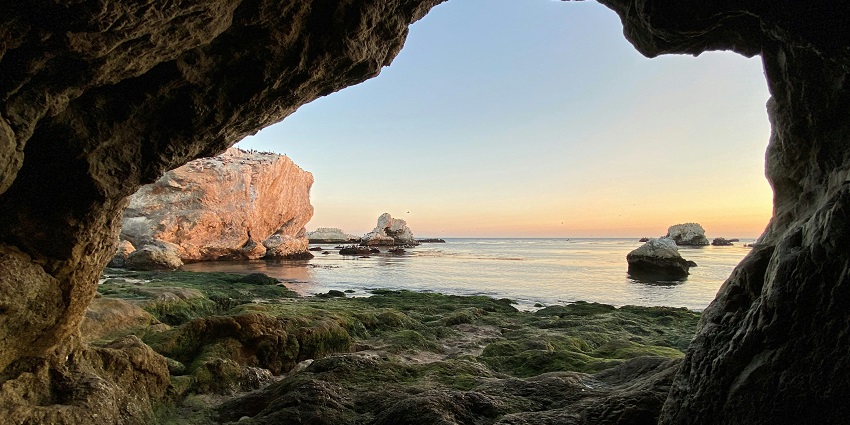
Photo: Philip Wahl / Unsplash / Image For Representation Only
The best time to visit the Gupta Dham Caves is during the winter months from October to March, when the weather remains cool and comfortable. This period also coincides with various pilgrimage events, particularly during the Hindu month of Shravan, July-August, attracting numerous devotees. Winter facilitates easier access to nearby attractions, such as the Kaimur Wildlife Sanctuary.
Other Factors To Consider
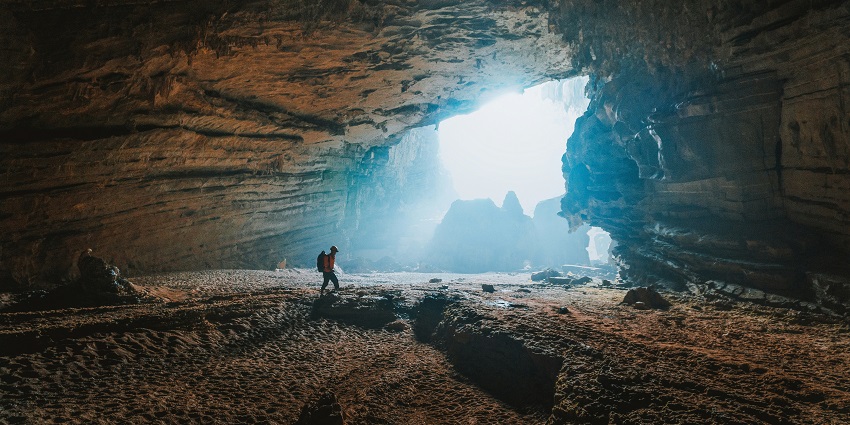
Photo: Le Tan / Unsplash / Image For Representation Only
Average Cost Of The Trip
An average trip cost to the Gupta Dham Caves can be quite budget-friendly. Accommodation expenses range between ₹800 and ₹2000 each night, including both accommodation and location prices.Overall, a two-day excursion could reasonably cost between ₹3000 and ₹6000 per individual, not accounting for additional expenses such as souvenirs or extra activities.
Tips For Travellers
- Start your morning at an early hour to enjoy your exploration and their adjacent regions in more temperate conditions.
- Bring necessary items such as water and snacks because the amenities in proximity to the caves are sparse.
- Opt for comfortable, non-slip footwear, as the cave terrain can be both slippery and uneven.
- Uphold cleanliness and refrain from disrupting the natural formations within the caves.
- Capture the beautiful photos of Gupta Dham caves by utilising low-light settings. You might also consider bringing a tripod for more stable shots.
Suggested Read: Aqua Water Park Patna
The Gupta Dham Caves offer a captivating blend of history, spirituality, and natural beauty for those eager to explore Bihar’s rich heritage. For a memorable experience, don’t miss checking out Gupta Dham photos to glimpse its stunning allure. Adventurers can also embark on the exciting Gupta Dham trek to fully immerse themselves in the natural surroundings. Plan your Gupta Dham adventure with TripXL today and consider all your options before finalizing your plans.
Cover Photo: Tama66 / Pixabay/ Image For Representation Only


 WhatsApp
WhatsApp
 Twitter
Twitter









